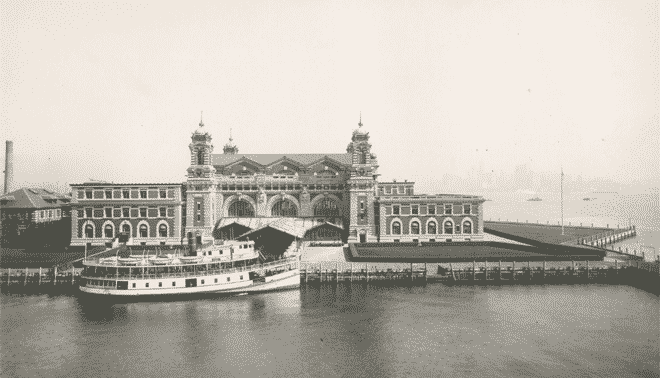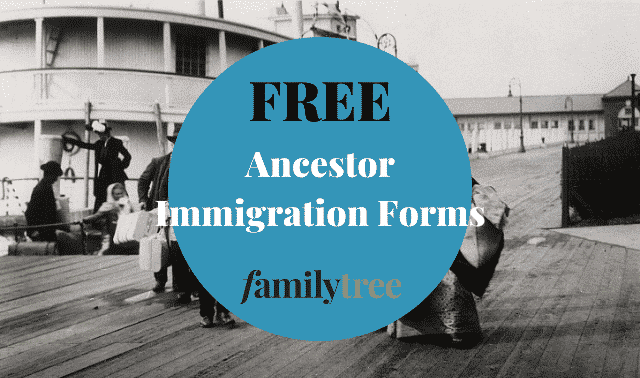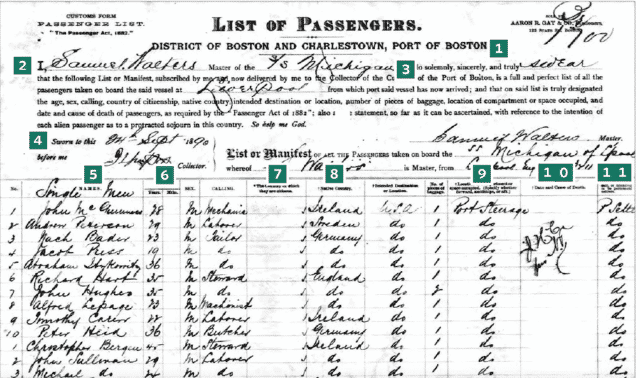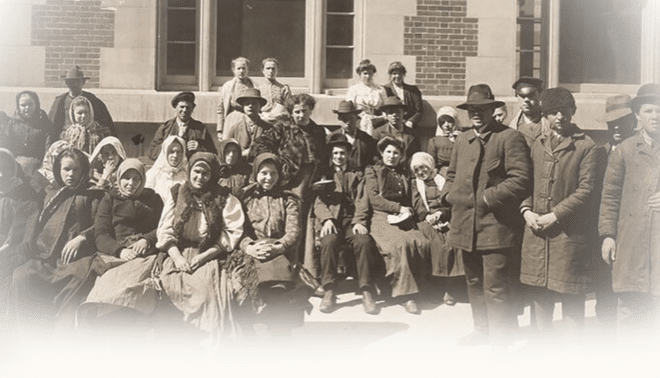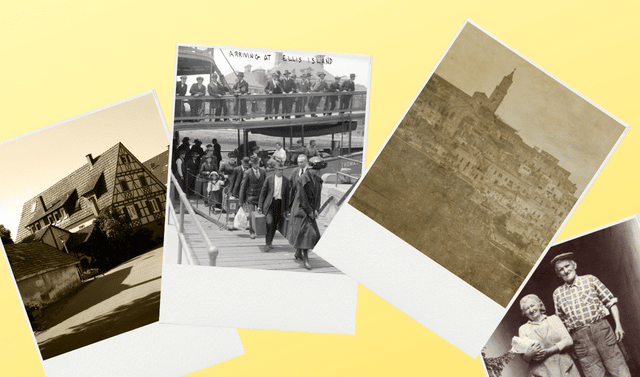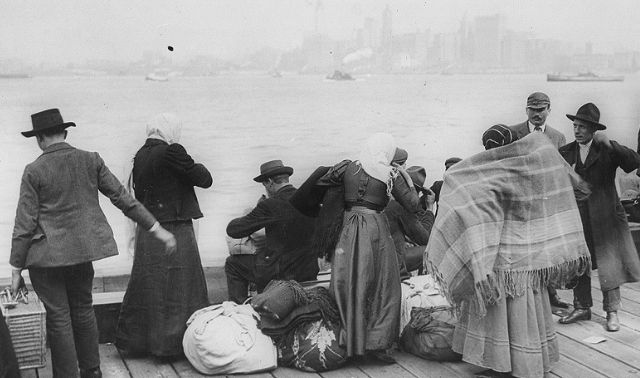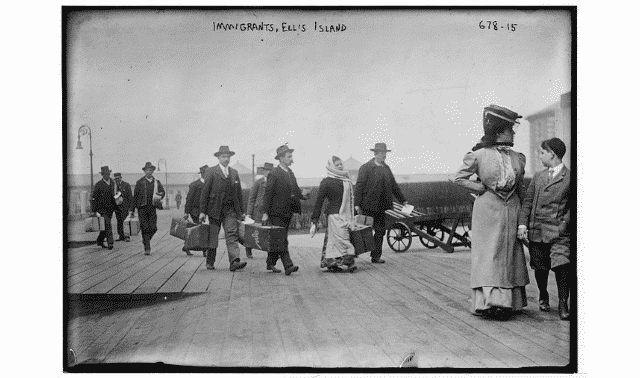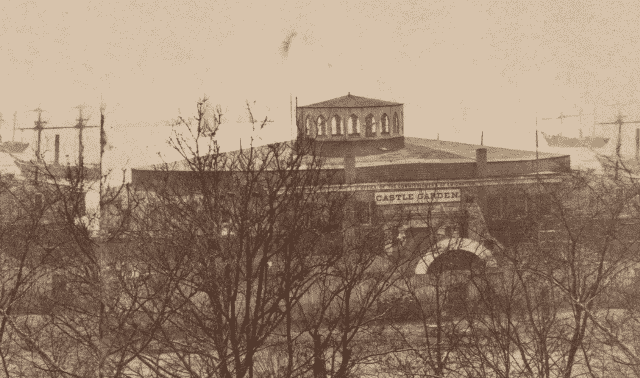
Maybe you were disappointed to learn your immigrant ancestors were among the huddled masses who entered New York Harbor before Ellis Island opened in 1892—which means they’re not in that massive, well-known passenger-list database. That online mecca basks in a much-deserved limelight, but it also overshadows Ellis Island’s humble precursor: Castle Garden.
Between 1855 and 1890, the landing depot there received more than 8 million immigrants, primarily Protestants and Roman Catholics from Western and Northern Europe. And though Castle Garden resources aren’t as well-known as tools for that other doorway into the United States, you can still find many of the depot’s immigration records online.
Follow these four steps to find Castle Garden passenger lists—and your ancestors listed in them.
1. Study the History of Castle Garden
More than a dozen forts defended New York Harbor during the War of 1812. Those included the Southwest Battery, built between 1808 and 1811 on the rocks off the tip of Manhattan Island. Although it sported 8 foot-thick walls and was armed with 28 cannons, the fort never fired upon an enemy. In 1815, the battery was renamed Castle Clinton after New York City’s mayor, DeWitt Clinton, then in 1821 the army left and deeded the fort to New York City.
Remodeled as a concert hall, outfitted with newfangled gas lighting and dubbed Castle Garden in 1824, the building enjoyed three decades as New York City’s premier destination for the affluent to see celebrity galas, watch fireworks and attend political rallies. By 1844, complete with a roof and a massive indoor water fountain, it had morphed into an opera house and theater. The venue’s proudest moment was the 1850 American debut of P.T. Barnum’s “Swedish nightingale,” soprano Jenny Lind.
But in 1855, the state of New York took over the building, joined it to Manhattan by landfill and—despite public opposition to concentrating immigrants in the area—opened the Castle Garden Emigrant Landing Depot. Before then, immigrants were dropped off at piers throughout New York City, where they were vulnerable to crooks and con artists.
Castle Garden staff administered short inspections and medical examinations, offered translation and letter-writing services, exchanged foreign currency, displayed approved boardinghouse advertisements and helped new arrivals find work. A fire in 1876 gutted the building and interrupted the procession of passengers, but a reconstructed facility resumed operations three months later.
An immigration boom overwhelmed Castle Garden during the 1880s, when 5.7 million newcomers arrived on US shores, and the federal government moved to take over immigrant processing. On April 18, 1890, the last passengers left Castle Garden. The building was reincarnated as an aquarium from 1896 to 1941, then it sat empty. Now a National Historic Monument, the restored structure—known again as Castle Clinton— is where visitors buy ferry tickets for Ellis Island.
2. Learn About Castle Garden Records
The federal government started keeping track of immigrant arrivals in 1820 to comply with the Steerage Act. Passenger lists from that year until 1891 were called customs lists. The United States printed the forms and shipping company personnel completed them at the departure port.
These primarily statistical lists contain limited information: the name of the ship and its master; the port of embarkation; the date and port of arrival; and each passenger’s name, sex, age, occupation and nationality. Genealogists researching pre-1891 New York immigrants often call these “Castle Garden lists” to distinguish them from “Ellis Island lists,” created from 1892 to 1921.
The port of departure given on a customs list may not be where your ancestors originally boarded. Ships often stopped several times during voyages, and the records might show a ship’s most recent stop before arriving in New York. If your ancestors’ boat originated in Bremen and continued to Liverpool, England, say, you might find them on a passenger list from Liverpool.
3. Search Online Passenger Lists
You can access Castle Garden passenger lists for free at FamilySearch or you can search at the subscription site Ancestry.com. Stephen Morse has easy-to-use search forms for the lists at Ancestry.com and FamilySearch, which let you look for partial words and give a range for the arrival year. You’ll need an Ancestry.com subscription to view results from that site.
If you know your ancestor’s arrival month, year and ship, you can also browse the lists on Ancestry.com or FamilySearch. You’ll just need to identify the date of arrival and ship, and you’ll see the first page of the passenger list.
You can access the original microfilm if you’re having trouble keyword-searching for your ancestor, but you’ll want to have at least a rough arrival date in hand. Select National Archives locations as well as the National Archives building in Washington, DC have originals (M237, “Passenger Lists of Vessels Arriving at New York, NY, 1820-1897”). You can order original records from NARA online, or find reels at the FamilySearch Library in Salt Lake City and at select public libraries around the countries.
4. Identify Your Immigrant Ancestors
You might find that Castle Garden passenger lists don’t provide enough information to ensure you have the correct ancestor. On Ancestry.com, for example, you’d find about 30 candidates for a Mary Gordon who was 21 when she came to America in the 1850s. Which one is our Mary?
We could rule out any who were married, since our Mary was single when she arrived. But then again, the right Mary might not be any of these women, if her name was recorded differently on the passenger list or the indexers transcribed it wrong.
It’s a big help to know the names of others who traveled with the person you’re after—especially when you’re looking for a common name. Try to narrow the possible names to a manageable number, and note the passengers listed above and below each candidate. Then search for those names along with your ancestor in other types of records.
For example, on Mary Gordon’s list for the ship City of Mobile, you’d note that Mary Jane Gorman, 21, appears on the line above Mary, and the three passengers below her are Mary Sullivan, 8, Johanna Blervett, 12, and Biddy Colbertt, 20. An 8-year-old and a 12-year-old likely aren’t traveling alone, and since they’re listed right below Mary’s name, it’s a good bet they’re with her. (Children generally are recorded after the adult they accompany.)
Now, review your other research on Mary—do any of the other passengers’ names show up in the records? If so, then you’ve identified your Mary. If not, move on to the next candidate and try the same method.
See NARA’s guide on immigration for more research help. Follow these steps and you’ll bring your Castle Garden ancestors out of the shadows.
Versions of this article appeared in the August 2005 issue of Family Tree Magazine and in The Family Tree Guide to Finding Your Ellis Island Ancestors by Sharon DeBartolo Carmack (Family Tree Books).

